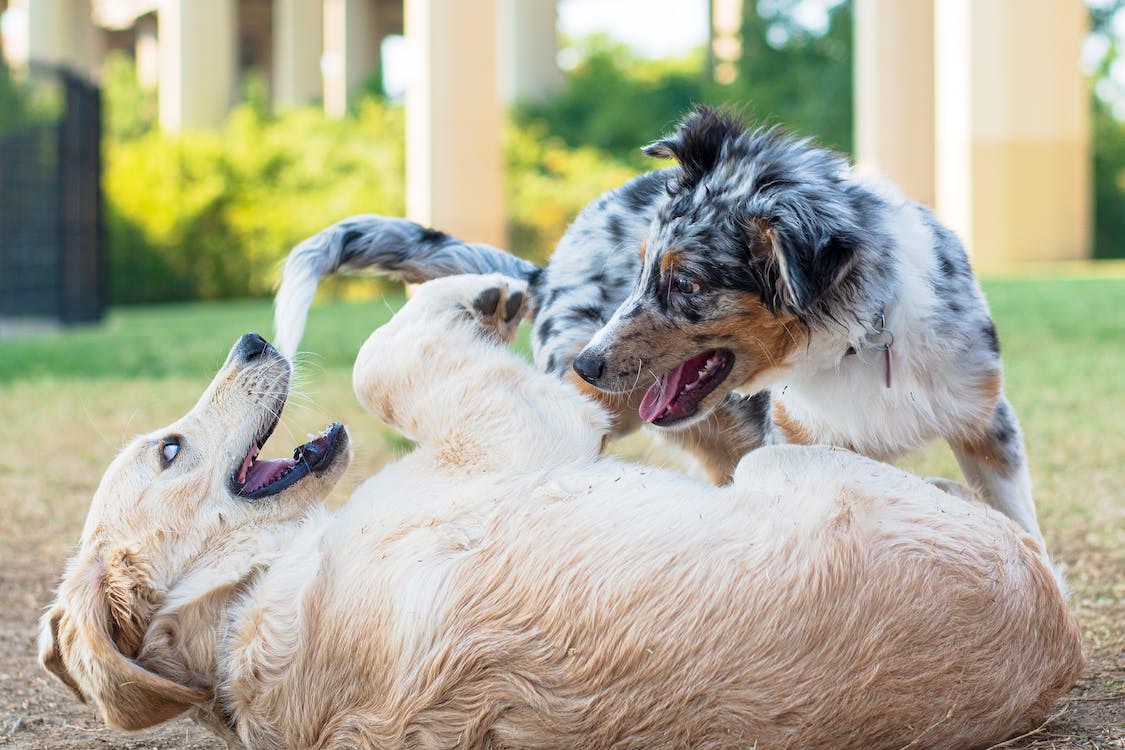Appropriate dog play involves mutual enjoyment, respect, and safety for both dogs. Here are some key aspects:
Consent: Dogs should engage willingly in play without signs of fear, stress, or discomfort. An uncertain dog might need time to watch play from a safe distance before choosing to participate.
Matching Energy Levels: Dogs should have similar size and energy levels to prevent one from feeling overwhelmed or intimidated.
Supervision: Through human intervention and support, our puppies learn from a young age that people help keep them safe. This strengthens the dog-human bond.
Body Language: Understanding canine body language helps people identify signs of discomfort, stress, or overstimulation during play. A great resource for understanding body language and play is ispeakdog.org.
Taking Breaks: Dogs should have opportunities to take breaks during play to avoid exhaustion and prevent tension from escalating. I like to see dogs take voluntary breaks, for example, when a tired dog disengages from play and lays down on the perimeter of the play area. When tired, some dogs will continue to play but become irritable. These dogs need a human to intervene and direct them to lie down for a moment.
Communication Signals: Dogs should respect each other’s space and signals to stop play if one dog becomes overwhelmed or needs a break. Puppies must learn these communication signals early in life through positive experiences during play with a variety of dogs.
Wrestling and Chasing: Some dogs love to wrestle. During wrestling, I look for space between the dogs’ tummies. If the dog on top is squishing the bottom dog for more than a few seconds, we might intervene. Other dogs love chase games. Chase games between two dogs can be safe, but if a crowd starts chasing a single dog, it is time to intervene.
Vocalization and Piloerection: Loud vocalizations can be part of healthy play. These can include barking and growling. We always look at the dog’s whole body when assessing whether vocalizations are happy or a sign that the play is souring. This is where understanding canine body language is important. Piloerection (also known as ”hackles up” is not necessarily a sign of antagonistic behavior in play. Hackles go up when dogs are excited. Again, looking at the dog’s whole body tells us if this is excitement in a positive or negative way.
Chew Face: I just want to take a moment to point out an incredibly sweet game that I call Chew Face. This game usually only happens between two dogs that really like each other, that’s what makes it so special. In Chew Face, both dogs lie on their sides facing each other. They bare their teeth, simultaneously trying to chew on each other’s faces, in a most inefficient way. They often make little grunting sounds or sneeze during Chew Face and gently paw at each other. What a funny way to express affection!
This article appears courtesy of DOG TRAINING BY VALERIE, Valerie Balwanz, CBCC-KA, CPDT-KA, PMCT
Valerie Balwanz is a behaviorist who generously shares her expertise with the CAF to help new pet owners. Visit her website for more information about training, and behavioral issues, and to contact her.

